More recently, I took up photography. Now the Painted Bunting is a favored subject. I have many shots of them at bird feeders, but I strive to capture their image in more natural surroundings.
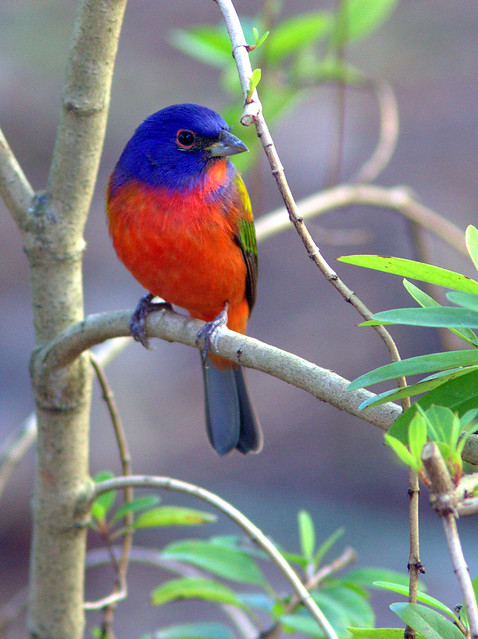
There are two breeding populations of Painted Buntings in the US. One occupies a large area centered in "Arklatex" (Texas, Louisiana, Arkansas) and nearby Oklahoma. The other, smaller area is along the southeastern Atlantic coast, from the Carolinas into northern Florida. The western population winters in coastal Mexico and Central America, while we in South Florida enjoy those migrating through the state to Cuba and the Bahamas, many of which remain here all winter.
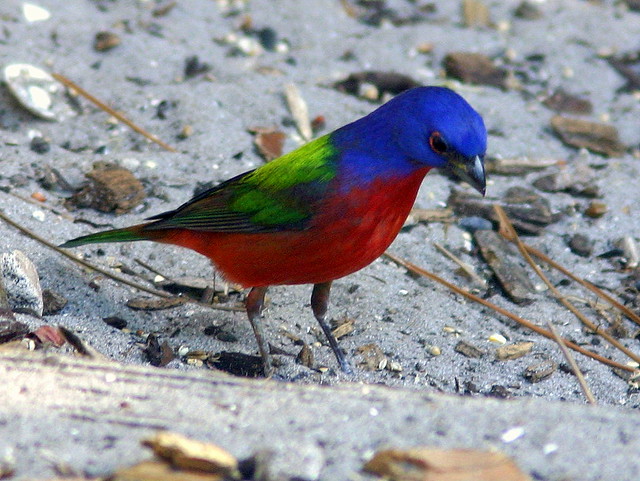
The eastern population is adversely affected by human development of the coastal wetlands. Their numbers have steadily decreased, dropping by almost two-thirds since 1966. Ref: http://www.allaboutbirds.org/guide/Painted_Bunting/lifehistory
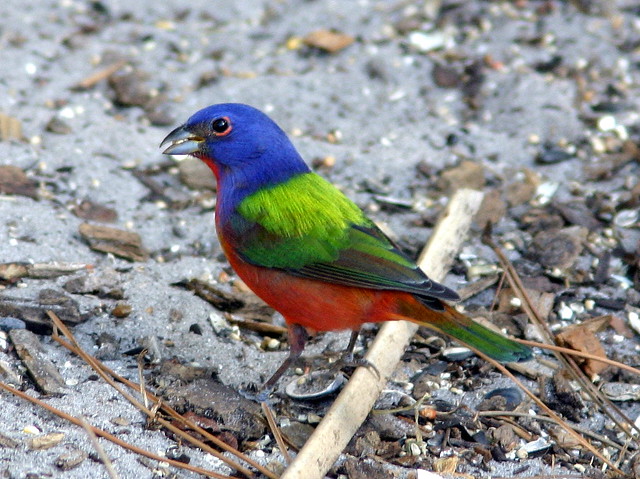
Unfortunately, they are popular cage birds in Latin America and even in Miami. Despite their protection under the Migratory Bird Treaty, they are commonly trapped in south Florida, in residential neighborhoods and even in and immediately outside Everglades National Park.
Excerpt from The Danger of Beauty: "Our preliminary data analysis shows that for the domestic trade in Mexico alone, more than 100,000 Painted Buntings were trapped from 1984 through 2000, an average of 5,800 birds per year. This does not include any information on the illegal trade, which is commonplace but very difficult to document..."
A frustrating fact is that if birders find traps or even see them being captured the perpetrators cannot be arrested unless the crime is witnessed by a law enforcement officer. Read more here, with photos of trapped buntings: http://www.tropicalaudubon.org/trapping.html
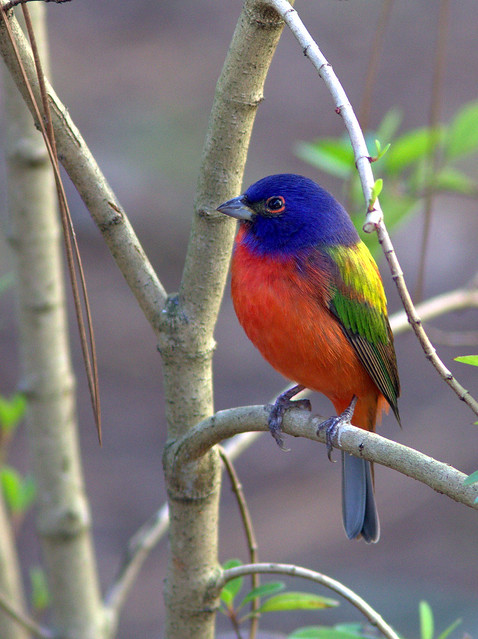
I have unfairly favored the males in the above images. Females are beautiful in their own right. They are so green that they can sometimes remind one of small parrots.

First year males can resemble the females, so green birds greatly outnumber the brightly colored males in the wetlands near our south Florida home.

A few birds will stray out of their normal range, especially during migration, and they have been reported along the east coast as far north as New York.
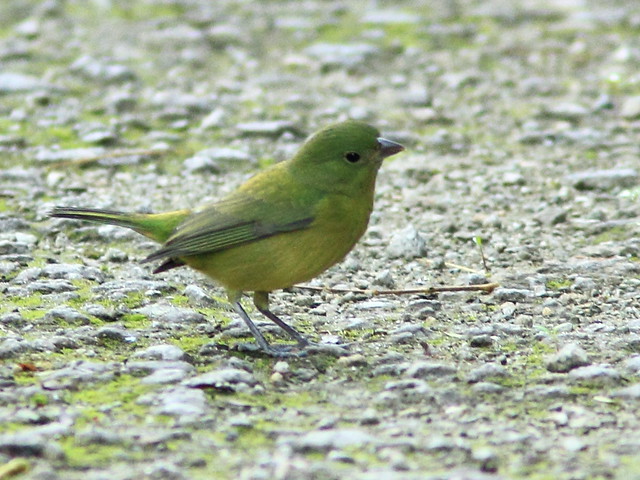
I suffer no shortage of pictures of the females!
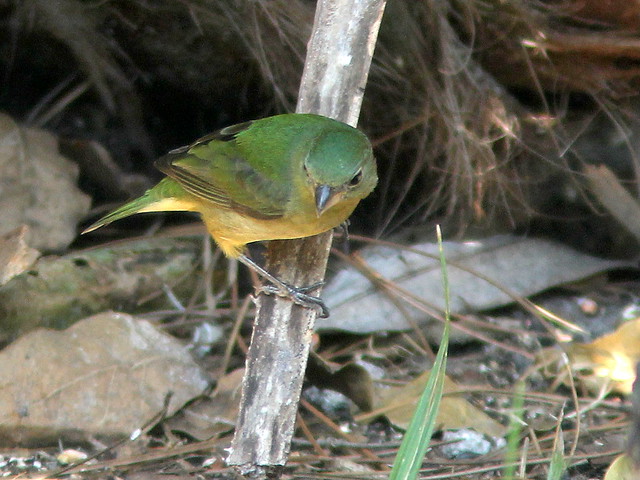
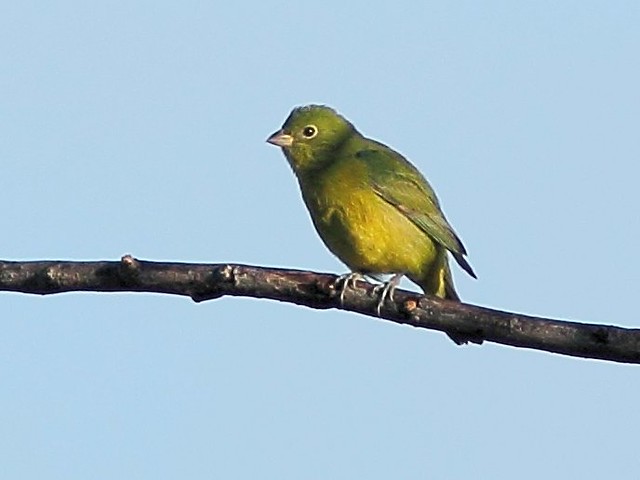

A caged male Painted Bunting in Cuba, a wild bird in obvious distress:

These birds are so beautiful! Our cabin up in Oklahoma has alot of these birds. I tried to photograph some of them this weekend with that big rental lens, but only got cardinals and finches. The weather was just terrible, and for the most part did not coooperate with having any camera equipment out side. Your photos are amazing. What sort of lens do you have. I can see that I am going to enjoy birding.... something i have never done before, and will eventually have to get a better lens than the one that I have. Would love to know what you use.
ReplyDelete@Jeanne-- Thanks for commenting! Good luck with your photography. I've been doing this for only a few years.
ReplyDeleteMy gear:
Canon EOS 60D 18 MP Digital SLR Camera
Canon EF 300mm f/4L IS USM Telephoto Lens
Canon EF 1.4X II Extender (420 mm f/5.6 lens system)
Such beautiful birds and I had no idea that they were being poached but then again, I know very little about these birds. I have yet to see one in the wild. Your pics are so wonderful!
ReplyDeleteExcellent shots Kenneth!Great captures!Such beautiful birds! I visit often your blog,when Eilleen is joining you with her posts!
ReplyDeleteThank you for your kind comment!
Dimi...
They are beautiful birds, i just love them. It would be a shame to see them decline. Great shots!
ReplyDeleteI thought I'd never seen one, but maybe one of those green birds I couldn't identify was a painted bunting. Beautiful photos of beautiful birds.
ReplyDeleteAmazing photos of a gorgeous bird. I can't wait to see one someday. We had one in northern Minnesota (!) last year, but I missed it by a day.
ReplyDeleteThis beautiful male displays such an amazing & attractive panorama of colors. The female is also so adorable.
ReplyDeleteA male Painted Bunting is definitely on my short list of must see birds.I remember driving over to Hamden to see one once after it was reported.It was disappointed to find out that it was a female and not the male when I got there.Great photos!
ReplyDeleteI feel lucky enough to see both populations (in Texas and Coastal Georgia) lucky enough to get a few shots of a male in GA.
ReplyDeleteStunning pictures, however some pictures contain some noise.
ReplyDelete